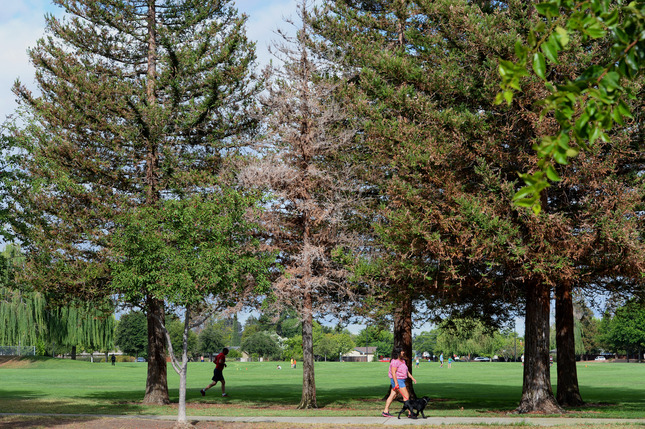How To Spot A Sick Tree
Trees are an important landscaping feature for any home. Providing shade, noise reduction, visual cover, and more, trees are an easy way to add beauty and value to any property. Trees, by and large, require little care, even exotic or fruit bearing trees are pretty good at taking care of themselves, and need little in the way of maintenance. That isn’t to say you can ‘plant and forget’ though, trees can suffer from a variety of ailments and issues, and still need occasional attention to keep them at their peak. These are some simple tips that anyone can use to determine if a tree is sick or dying.
First, look at the tree as a whole, see if there are bare or dead branches, damage to the trunk, or other stand-out issues. Branches are a good indicator that there’s a problem, deciduous (trees that drop leaves in cold seasons) branches should be bare in winter, and covered with fresh leaves in spring. Branches should also never have bunches of dead leaves (the tree should be detaching them). Trunk damage is also easy to spot. Vertical cracks or splits, dry brittle wood, and thin frail bark (or bare patches where there should be bark), are all signals that something is wrong. Remember to check to see if the tree is leaning. A moderate to severe lean can mean that the tree’s roots aren’t finding proper purchase, or are too sick to support the weight of the tree. Shallow or thin root systems also mean your soil could have problems. Leaning trees should never be ignored, especially if their lean targets homes, roadways, or power lines.

In terms of specific problems, look for fungus. Shelf or bracket fungi can’t survive on a tree unless they are properly nourished, and since they only feed on dead or severely damaged wood their presence can reveal a problem. Insect or other pest damage is also something that can become a serious issue. Though the specific types vary from region to region, look for trunk or leaf discoloration, series of tiny boreholes, or just the elevated presence of pests in the area. Pest infestations are something that you may not be able to tackle on your own, and as such should involve a professional exterminator or tree care specialist.
Another issue that many don’t consider is how changing the area around a tree can increase stress upon it. Removing trees from larger groupings (whether in natural copses or more landscaped formations) can cause increased light and wind exposure, potentially harming trees you want to keep. Changes in grading can also cause surprisingly significant problems, especially if the drainage of the soil is affected. Too much drainage can cause a tree to have trouble keeping water, while too little can cause its roots to become swamped and over-saturated.
While some of these ideas may seem complex, trees really only need to be inspected once or twice a year. Remember to trust your gut, if something seems off about your tree, then give it a little extra attention, and see if you can diagnose the issue yourself. Use these tips to make sure your property is staying beautiful for as long as you can, and don’t be afraid to consult a professional if something seems outside your abilities.
If you’re interested in tree trimming or stump removal try out Scottsdale Tree Trimmers. They are a full service cactus, tree, and stump removal company who have been around for years!















